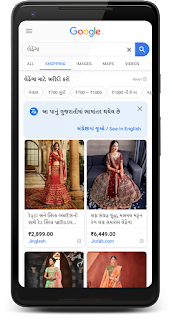Almost a year and a half ago, we announced Google Research India, an AI Lab in Bangalore. Along with advancing fundamental research in AI, we sought to support nonprofits and universities to solve big challenges in the field of Public Health, Conservation, Agriculture and Education using AI.
In 2020, we announced AI for Social Good would be supporting six projects from NGOs and Academic collaborations to utilize the application of AI to assist underserved communities that have not traditionally benefited from the prowess of AI. Google provided scientific and technical contributions for each project, as well as funding from Google Research and Google.org.
Today, we are pleased to provide an update on some of these projects, and highlight successes and challenges in AI for Social Good.
Maternal Healthcare
India accounts for 11 percent of global maternal mortality, and a woman in India dies in childbirth every fifteen minutes. However, almost 90 percent of maternal deaths are avoidable if women receive timely intervention. Access to timely, accurate health information is a significant challenge among women in rural areas and urban slums. ARMMAN runs mMitra, a free mobile voice call service that sends timely and targeted preventive care information to expectant and new mothers. Adherence to such public health programs is a big challenge but timely intervention to retain people is beneficial to improve maternal health outcomes. Researchers from Google Research and IIT Madras worked with ARMMAN to design an AI technology that could provide an indication of women who were at risk of dropping out from the health information program. The early targeted identification helps ARMMAN to personalise interventions and retain these people, improving maternal health outcomes. Test results demonstrated that use of AI technology was able to bring down the risk of drop-offs by up to 32% for women at high risk of dropping out. The team is currently working towards scaling this to 300,000+ women in mMitra and we are excited to continue to support ARMMAN as the project team increases the reach of this technology to 1M+ mothers and children in 2021. To support ARMMAN’s growing efforts, Google.org is committing another USD $530,000 to ARMMAN to scale the use of AI for social good to reach underserved women and children.
The importance of targeted interventions to improve health outcomes cannot be overstated. AI can help play a critical role in its advancement, however the lack of availability of high-quality public health data is a significant challenge. Frequently, data collection is enabled through the labour and expertise of frontline health workers and yet Khushibaby discovered various challenges in the field that inhibited the collection of the high-quality data required. Researchers from Singapore Management University and Google Research collaborated with Khushibaby to develop AI algorithms with over 90 percent accuracy that provided timely predictions about the drop in health workers’ data quality. These timely predictions help Khushibaby provide assistance to the health worker to enable them to record high-quality data. The project team is currently planning to deploy and safely test this technology with 250+ healthcare workers who serve over 15,000 people.
Wildlife Conservation
India is home to some of the most biodiverse regions, where human settlements and wildlife co-exist in forests. However, interactions between local communities and wildlife can result in conflicts, leading to loss of crops, cattle, and even human life. Wildlife Conservation Trust needed help to proactively predict human-wildlife conflict to enable them to take timely steps to protect local communities, wildlife, and the forest. With technical and scientific contributions from Google Research and Singapore Management University, Wildlife Conservation Trust designed AI models that help predict human-wildlife conflict in Bramhapuri Forest Division in Tadoba, Maharashtra. These novel AI techniques provide over 80 percent accuracy in predicting human-wildlife conflict in the Bramhapuri Forest Division in the test results. This work is currently being field-tested in Chandrapur district, Madhya Pradesh, to ensure safe deployment.
Local Language Adoption
Six out of ten children globally do not achieve minimum proficiency levels in reading, despite attending school. Lack of access to reading content in one’s local language is a significant challenge in addressing this problem. Storyweaver, an open-licence driven organization, works towards bridging that gap by developing and curating story books in a multitude of local languages to help children learn new concepts, new ideas and open up their imagination. Storyweaver needed help to enable access to creation tools in low-resource languages. Creation tools in low-resource languages suffer from very low accuracy, adding barriers to content creation. The team at AI4Bharat & IIT Madras, with support from Google, developed state-of-the-art Natural Language Understanding tools to develop open-language models for two low-resource languages (Konkani, Maithal), making story reading easier for 70,000+ children.
We are humbled to see the progress in the development and deployment of AI technologies for social good in a short period of time. We are confident in our development and support of a collaborative model that involves experts from Academia and NGOs, as well as contributions from Google, to advance AI for social good. Continuing our scientific, technical, and financial support of organizations working in this space, we are excited to announce an expanded follow-up program to initiate collaborative AI for Social Good projects in Asia Pacific and Sub-Saharan Africa.
We recognize that AI is not a magic wand to solve all the world’s challenges, it is however a powerful tool to help experts and social-impact organisations to explore and address hard, unanswered questions.
Posted by Milind Tambe, Director of AI for Social Good, Google Research India, and Manish Gupta, Director, Google Research India



